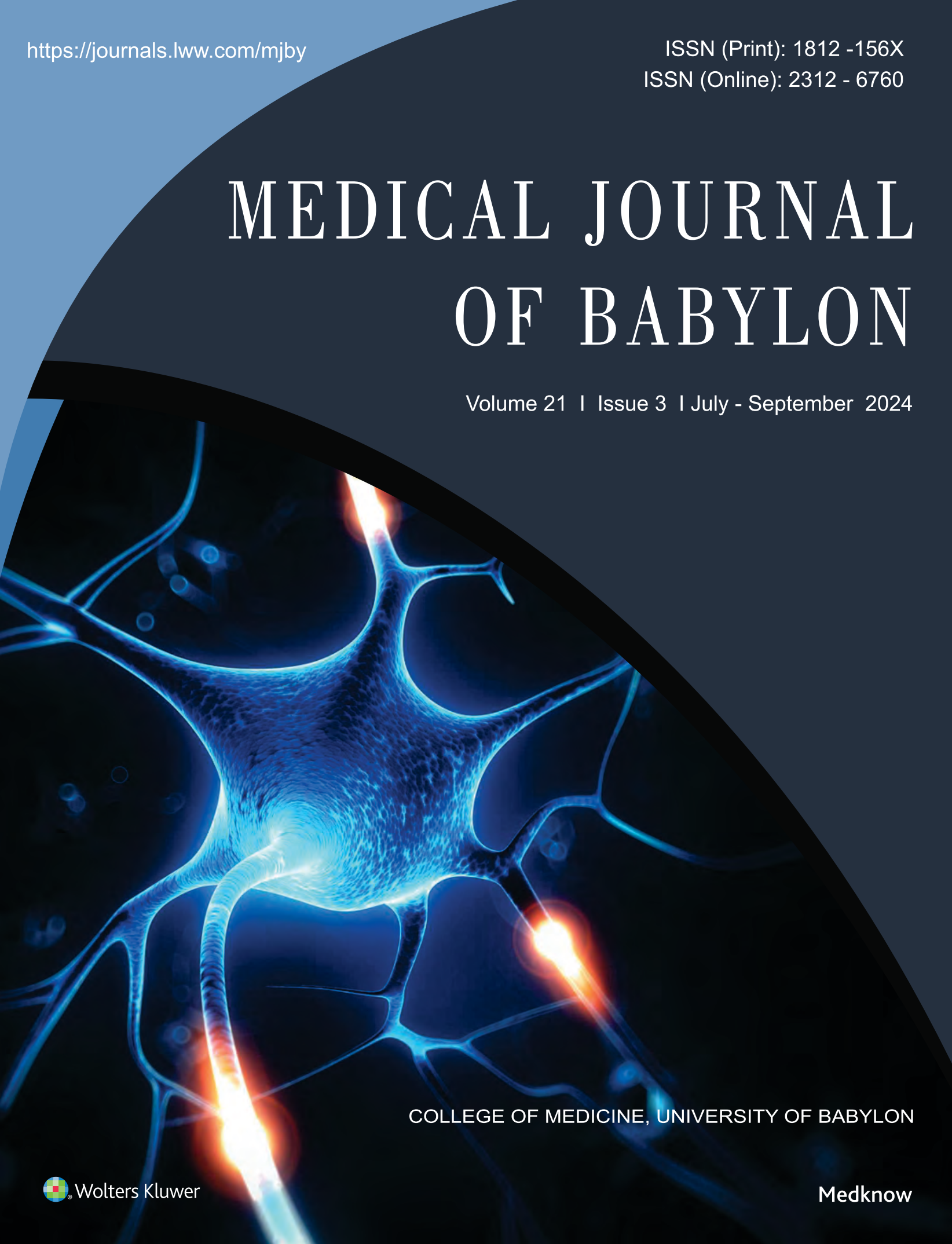Abstract
This is an introductory pilot study for a more detailed one on the symptom profile of dry eye
syndrome in Hilla. It aims at determinating the approximate figure of prevalence of the condition as
well as an attempt of finding its seasonal and age difference.
Patients and methods:
The patients are those attending the Ophthalmic Consultation Clinic in Hilla Teaching General
Hospital after being examined by the same specialist; the case history and examination results were
registered after the preliminary diagosis.
The overall prevalence is 50.31%; it was the greatest in summer 67.07%, for the rest of
seasons the difference in prevalence was not statistically significant (winter 50%, spring 48.24%,
autumn 35.44%).
This very high prevalence points to the importance of making a detailed study of the symptom
profile to clarify the clinical picture of the disease and its position in the differential diagnosis of a
large number of ophthalmic diseases.
syndrome in Hilla. It aims at determinating the approximate figure of prevalence of the condition as
well as an attempt of finding its seasonal and age difference.
Patients and methods:
The patients are those attending the Ophthalmic Consultation Clinic in Hilla Teaching General
Hospital after being examined by the same specialist; the case history and examination results were
registered after the preliminary diagosis.
The overall prevalence is 50.31%; it was the greatest in summer 67.07%, for the rest of
seasons the difference in prevalence was not statistically significant (winter 50%, spring 48.24%,
autumn 35.44%).
This very high prevalence points to the importance of making a detailed study of the symptom
profile to clarify the clinical picture of the disease and its position in the differential diagnosis of a
large number of ophthalmic diseases.
